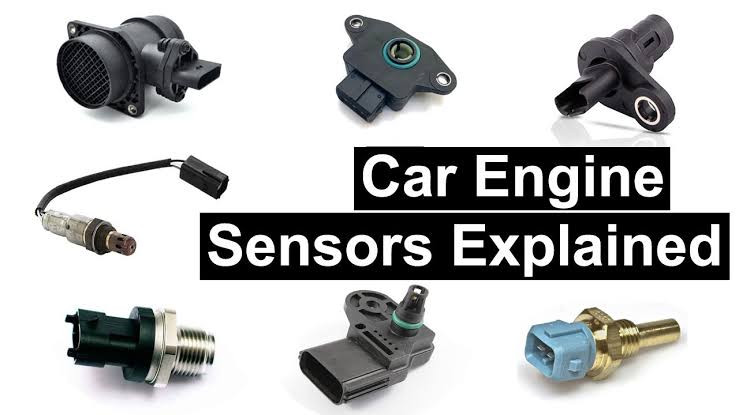Cars today are equipped with many sensors that monitor and control various aspects of the vehicle’s performance, safety, and comfort. Sensors are devices that measure physical quantities and convert them into electrical signals that can be processed by the car’s computer. Sensors can have different names and abbreviations, depending on their function and location.
Here are 10 common abbreviations for sensors used in cars, how they are abbreviated, and what they do:
O2 Sensor
O2 sensor stands for oxygen sensor. It is a sensor that measures the amount of oxygen in the exhaust gas. It helps the car’s computer adjust the air-fuel ratio to optimize the combustion and reduce the emissions. A faulty O2 sensor can cause poor fuel economy, engine performance issues, and increased emissions.
MAF Sensor
MAF sensor stands for mass air flow sensor. It is a sensor that measures the amount of air entering the engine. It helps the car’s computer calculate the amount of fuel needed for the combustion. A faulty MAF sensor can cause rough idling, stalling, hesitation, and loss of power.
MAP Sensor
MAP sensor stands for manifold absolute pressure sensor. It is a sensor that measures the air pressure in the intake manifold. It helps the car’s computer determine the engine load and adjust the ignition timing and fuel injection. A faulty MAP sensor can cause poor acceleration, detonation, and engine misfires.
TP Sensor
TP sensor stands for throttle position sensor. It is a sensor that measures the angle of the throttle valve. It helps the car’s computer control the amount of air and fuel entering the engine. A faulty TP sensor can cause erratic idling, surging, and poor drivability.
CKP Sensor
CKP sensor stands for crankshaft position sensor. It is a sensor that measures the position and speed of the crankshaft. It helps the car’s computer synchronize the ignition and fuel injection with the piston movement. A faulty CKP sensor can cause hard starting, stalling, and engine failure.
CMP Sensor
CMP sensor stands for camshaft position sensor. It is a sensor that measures the position and speed of the camshaft. It helps the car’s computer coordinate the opening and closing of the valves with the piston movement. A faulty CMP sensor can cause hard starting, stalling, and engine failure.
ABS Sensor
ABS sensor stands for anti-lock braking system sensor. It is a sensor that measures the speed and direction of the wheel rotation. It helps the car’s computer modulate the brake pressure to prevent the wheels from locking and skidding. A faulty ABS sensor can cause the ABS warning light to come on, reduced braking efficiency, and increased stopping distance.
TPMS Sensor
TPMS sensor stands for tire pressure monitoring system sensor. It is a sensor that measures the air pressure in the tires. It helps the car’s computer alert the driver of any underinflated or overinflated tires. A faulty TPMS sensor can cause the TPMS warning light to come on, inaccurate tire pressure readings, and increased tire wear.
ECT Sensor
ECT sensor stands for engine coolant temperature sensor. It is a sensor that measures the temperature of the engine coolant. It helps the car’s computer regulate the engine temperature, fan operation, and fuel injection. A faulty ECT sensor can cause the engine to overheat, run rich, or run lean.
IAT Sensor
IAT sensor stands for intake air temperature sensor. It is a sensor that measures the temperature of the air entering the engine. It helps the car’s computer adjust the air-fuel ratio, ignition timing, and turbo boost. A faulty IAT sensor can cause poor engine performance, increased emissions, and reduced fuel economy.
How to Maintain and Repair Car Sensors
Car sensors are vital components that ensure the optimal operation of your vehicle. However, they can also wear out, get dirty, or malfunction over time. To maintain and repair your car sensors, you should:
- Follow the manufacturer’s recommended service intervals and procedures for your vehicle.
- Check and replace the sensor’s wiring, connectors, and fuses if they are damaged or corroded.
- Clean the sensor’s surface and contacts with a soft cloth and a suitable cleaner if they are dirty or contaminated.
- Test the sensor’s output and resistance with a multimeter or a scan tool if they are suspected to be faulty.
- Replace the sensor with a new one if it is confirmed to be defective or out of specification.
By keeping your car sensors in good condition, you can improve your vehicle’s performance, safety, and efficiency. You can also save money and time by avoiding costly repairs and breakdowns.

Comments (0)
Please login to join the discussion
Be the first to comment on this article!
Share your thoughts and start the discussion